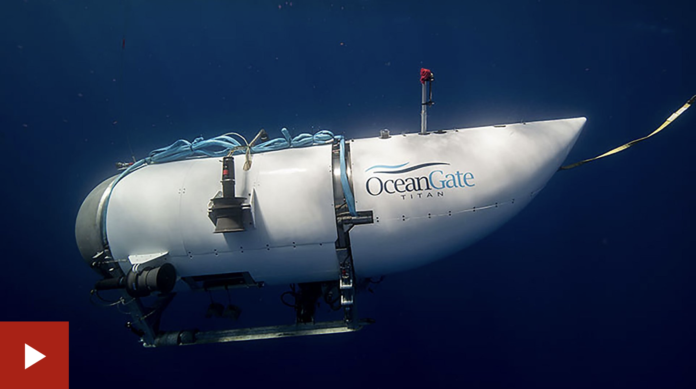The huge search for a missing submersible vessel near the wreck of the Titanic has entered a critical stage, as fears mount over the oxygen levels that may be on board.
And on Thursday many questions remained over how it could be recovered.
The minivan-sized submersible, which was owned and operated by the private company OceanGate Expeditions, is yet to be located. If it is found, it will need to be reached by complex rescue equipment and then brought to the surface in an operation that would likely take hours.
That would need to happen before the oxygen supply runs out and without damaging its structure or endangering those on board.
The condition of the vessel and its crew of five is unknown, but the US Coast Guard said the operation remains a rescue mission. “This is a search-and-rescue mission, 100%,” Captain Jamie Frederick told reporters on Wednesday.
There appeared to be a glimmer of hope after officials said undersea noises had been detected by Canadian search planes on Tuesday and Wednesday.
But it is still unclear what these were, and officials said they may not have come from the submersible. Remote-controlled underwater search vehicles (ROVs) were deployed to the area where the sounds were detected but are yet to find anything.
Several more ROVs were expected to arrive at the site on Thursday along with more multi-national support.
Tracking data showed the French research ship, Atalante, which is carrying a specialist deep-sea diving robot, nearing the area on Thursday morning. That robot is capable of researching depths below the Titanic wreck, which lies about 12,500 ft (3,810m) below the surface and has experience of surveying the Titanic.
The overall area of sea being scoured is about 26,000 sq km (10,000 sq miles), twice the size of the US state of Connecticut. The area is prone to stormy conditions and poor visibility which makes search operations more challenging, experts say.
On board the 21-foot vessel is British businessman Hamish Harding, British-Pakistani businessman Shahzada Dawood and his son Suleman, former French navy diver Paul-Henry Nargeolet and the CEO of OceanGate – which operates the submersible – Stockton Rush.
“One of the factors that makes it hard to predict how much oxygen is left is that we do not know the rate of the consumption of oxygen per occupant on the sub,” Rear Admiral John Mauger from the US Coast Guard told the BBC.
Dr Ken LeDez, a hyperbaric medicine expert at Memorial University in St John’s, Newfoundland, told the BBC it was possible the crew could survive even as oxygen supplies dwindle, depending on the crew’s fitness and the conditions in the submersible.
While it is impossible to know the exact conditions inside, Dr LeDez said the crew will likely be facing increasing levels of carbon dioxide and could also be dealing with cold temperatures, along with the declining levels of oxygen.
A combination of these factors could lead to hypothermia and a loss of consciousness, he said. But these conditions aren’t necessarily deadly and their metabolisms slowing down because of the cold could help them survive longer, he added.
“They’re very smart… very accomplished people in there,” he said. “If anybody can survive” in it, “it’s these individuals.”





